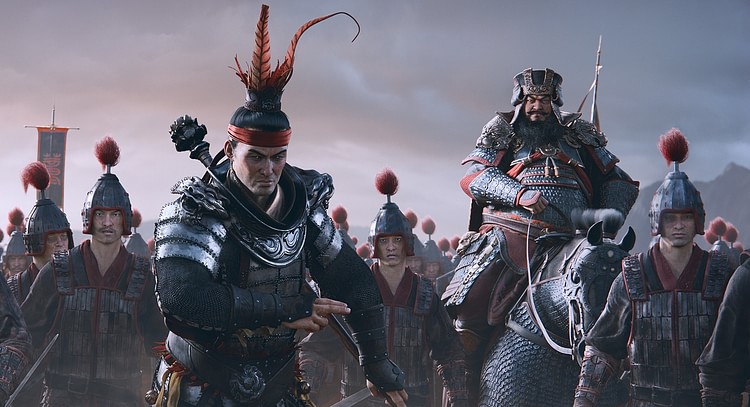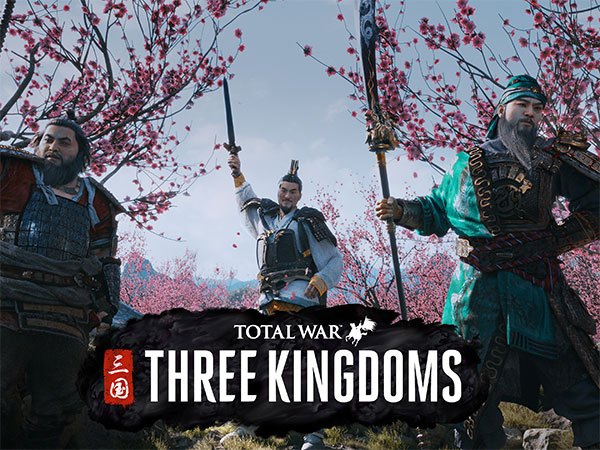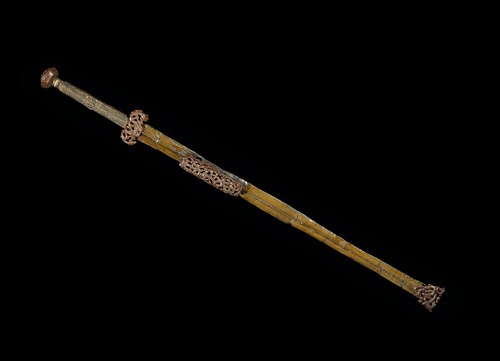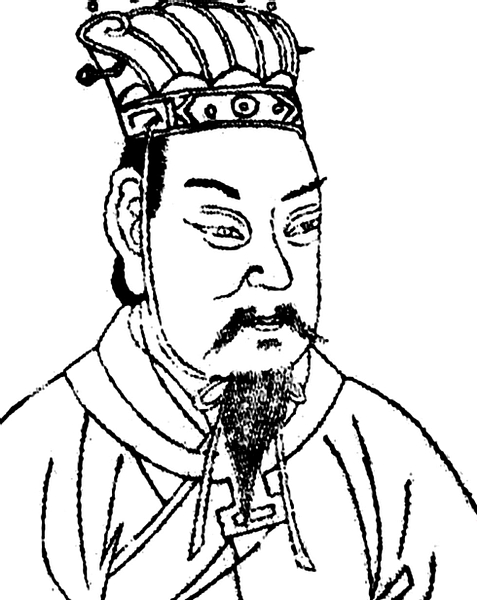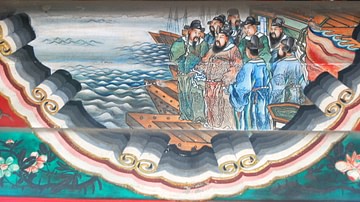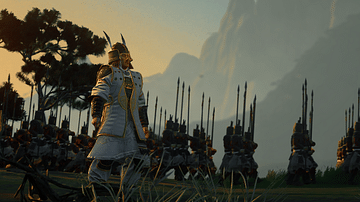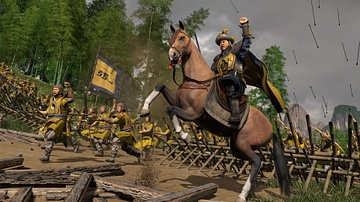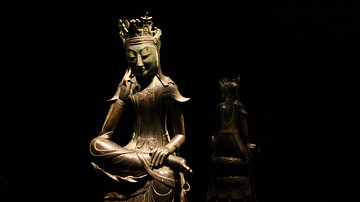The Early Three Kingdoms Period in ancient China, from 184 CE to 190 CE for the purposes of this article, was one of the most turbulent in China's history. With an ailing Han government unable to control its empire, brutal localised wars, rebellions and uprisings were rife. The capital would soon fall, followed by the Han dynasty itself, split asunder by rival dynastic factions at court, scheming eunuchs, and intractable Confucian literati. The order of the Emperor's rule was replaced by the chaos of competing warlords, men such as Dong Zhuo, Lu Bu, and Cao Cao, all ruthless and possessing one ambition: to alone rule all of China.
The period has long captured the public imagination beginning in the Sung Dynasty (960-1279 CE) and reaching a fever pitch of interest with The Romance of the Three Kingdoms (Sanguo yanyi), a historical novel written during the Ming Dynasty, either in the 14th or 15th century CE. Attributed by some to Luo Guanzhong, the romanticised and much-embroidered version of events has created lasting cultural heroes and sometimes even figures of worship such as Liu Bei, the Confucianist ruler of the Shu state, and his general Guan Yu, who became the God of War, Guan Di, as well as Sun Quan, the founder of Eastern Wu. The novel covers China's history from 168 CE to 280 CE and remains wildly popular today, inspiring films, theatre, literature, and computer games.
The Decline of the Han
The Han dynasty had been ruling China since 206 BCE as its most successful dynasty yet. Still, by the 2nd century CE, the emperors were facing troubled times. The central government, dominated by a secretive Inner Court with access to it strictly controlled by the scheming court eunuchs, was ever-more remote from the affairs of the everyday people in the provinces. Rebellions had already popped up in the 140s CE when they had been dealt with by sending officials to bribe local strongmen. No longer commanding an army of significance, the emperor could do little more.
The military forces still under a token allegiance to the Han rulers were permanently stationed on the frontiers, and they had little motivation to remain loyal to their distant commander-in-chief. The Han decision to change the age-old policy of giving only temporary commands of armies for specific campaigns and then recalling generals back to the capital before they got any big ideas would be a fateful one.
It was the individual commanders in the field who earned the respect and loyalty of their troops - a mix of professionals, convicts, and local tribesmen - and not the distant and never-seen emperor. The fact that they received their pay directly from their commander, no doubt, had much to do with this transfer of allegiance. As one local landlord noted:
Orders from the provincial and commandery governments arrive like thunderbolts; imperial edicts are merely hung upon the wall as decoration. (Lewis, 27)
Meanwhile, the peasantry at large was suffering from the usual and sadly regular natural disasters that beset China, especially floods and earthquakes, as well as the ongoing war with the people known as the Xianbi. The Xianbi, north of the Great Wall, felt threatened by Chinese expansion and, while they valued Chinese luxury goods through trade and at first welcomed interaction, they came to value their freedom more highly. As Xianbi resistance to Chinese encroachment grew, the Chinese government simply sent more and more military expeditions against them. This policy contributed greatly to undermining imperial authority because so few gains were apparent when compared with considerable losses.

Little was or could be done to improve the lives of the peasants because the state coffers were emptied by these unsuccessful wars against the Xianbi who, in 177 CE, led the Chinese army into an ambush in the northern steppes which was so successful that “three quarters of the men failed to return” (De Crespigny, 5). Further, the fact that tax was all too often avoided or syphoned off by corrupt officials complicated the lives of the peasantry even more.
Regional governors had to find their own way of raising revenue, and there was no guiding policy handed down from the capital. Locals had only one course of action: arm oneself as best as possible for self-defence. Landlords with the means to do so organised their own private armies, recruited from their tenants and local farmers. Those who could not rely on a rich benefactor fled to the hills or elsewhere - resulting in large-scale migrations and attendant instability - and sometimes even whole villages relocated to higher ground where they surrounded themselves with fortifications and hoped for the best. China was very quickly becoming a free-for-all.
The Yellow Turban Rebellion
In the final two decades of the 2nd century CE, the steady decline of the Han and the now constant rumblings of provincial discontent suddenly burst out of control with one of the most serious and long-lasting rebellions ever witnessed by shocked Chinese rulers and quivering local bureaucrats. The Yellow Turban Rebellion exploded in 184 CE, led by the charismatic Taoist mystic Zhang Jue (died 184 CE), and wreaked havoc on the land.
A popular religious movement, the Yellow Turban cult was closely associated with Taoism. Amongst its more appealing principles was the belief that illness came from sin but, especially good news to a peasantry short on medicines, diseases could be removed by confession of those sins. The rebellion was so called because the protagonists wore a turban whose colour represented earth, an element they identified with and which they hoped would put out the fire element associated with their enemy the Han.
Taoist philosophy understood the workings of the universe through the operation of the principle of Yin-Yang and the interaction of the Five Elements: earth, wood, metal, fire, and water. Above the five elements was Tian (heaven) which was represented by the color blue. Taoism was favored by most of the Han emperors and, when the Han first came to power, they associated their dynasty with heaven/blue but at some point changed to earth/yellow and, by the time of the Yellow Turban Rebellion, claimed rule by the power of fire/red. These changes in association with the elements may have to do with the focus of the dynasty at different times but this is unclear.
It is an interesting aspect of the rebellion that, philosophically, the two sides were operating from the same principles of Taoism and the same understanding of what was right and true. The Han claimed justification for rule based on the same principles the rebels were espousing to overthrow them but Zhang Jue and the rebels insisted they were fully justified in that they were identified with the earlier principle of earth/yellow which they claimed the Han had forsaken and betrayed in favor of fire/red.
In this, the rebels were invoking the spiritual concept of jiazhi which had to do with the fundamental value of an individual or action. The jiazhi (literally “worth” or “value”) of the earth - represented by the rebels - was claimed by them as inherently more powerful - and just - than that of their adversaries. By invoking jiazhi in their struggle, the rebels hoped to not only justify their cause but attract more support for the Yellow Turban Rebellion.
The movement's popularity began in the east, and it quickly spread, helped by a turn towards politics and the promotion of aid to the poor. The movement was vociferous in its criticism of the discrimination against women and the lower classes, which was rife in Chinese society. The cult eventually turned into a major military rebellion, which was rather ironic considering its leader Zhang Jue preached the objective of a Great Peace. The Yellow Turbans were organised into military units and prepared for action. Local government offices were targeted and smashed by the rebels across China. The rebellion seemed to crop up everywhere like cancer - out of control and fatal for the regime. Sixteen commanderies succumbed to the rebels, imperial armies were defeated, rulers kidnapped, and cities captured.
The whole of the country was now split into pockets held by rebels, warlords, or regional governors still loyal to the state. The confusion, constant warring, and deprivation of the Chinese people were summarised in a poem attributed to the warlord Cao Cao (c. 155-220 CE), who, like many leaders of the period, had a serious literary bent.
My armour has been worn so long that lice breed in it,
Myriad lineages have perished.
White bones exposed in the fields,
For a thousand li not even a cock is heard.
Only one out of a hundred survives,
Thinking of it rends my entrails.
(Lewis, 28)
The rebellion was brutally quashed within a year by an army sent by Cao Cao, then one of the Han emperor Lingdi's (r. 168-189 CE) foremost generals. Cao Cao had managed to organise a military coalition of the private armies of important nobles at court, and he moulded them into an efficient professional fighting force. The rebel leader Zhang Jue was either killed in battle or executed. The rebellion would, though, rumble on, albeit more quietly, under new leadership in eastern Sichuan province. The damage had been done, though, and now there was very little difference between local governors and local warlords right across China. The Han had dropped the reins of power in the provinces.
Cao Cao
Cao Cao had started his career as a commandant and police chief at the Han capital Luoyang during the 170s CE. He early-on established a reputation for being a stickler for the law and was not afraid to challenge the rich and powerful. Cao Cao is portrayed as a deliciously Machiavellian villain in later literature, and Chinese operas, too, cast him as a thoroughly nasty piece of work, with actors portraying the dictator usually wearing a snarling white mask with sinister eyebrows. Indicative of the dubious reputation of the warlord, his name lives on in the Chinese expression “Speak of Cao Cao and he appears” which is broadly equivalent to “Speak of the devil” in English.
There were many other military leaders besides Cao Cao, though, as an unfortunate consequence of the Yellow Turban Rebellion was that several local warlords had been backed by the emperor to raise their own armies and deal with the Yellow Turbans in their particular region. When the rebels were dealt with, these armies then clashed with each other and there followed a sustained period of civil war during which the capital at Luoyang was sacked by one Dong Zhuo (189-192 CE).
Dong Zhuo
Dong Zhuo, aka Zhongying, was a frontier general turned warlord based in the northwest of China. He had a long military career, working up the ranks from his starting point as a member of the imperial guards; Zhuo's unit was the elite corps, the Gentlemen of the Feathered Forest, whose members were composed of sons and grandsons who had lost their fathers in battle. Zhuo was exactly the kind of Han general described above - permanently stationed on the frontiers for a decade and left to his own devices.
He was recalled to court in 189 CE but refused on the grounds that his men not only needed him but had forcibly pulled back his carriage and would not let him go. He was fully aware of their loyalties to him alone, as he stated in the following extract from a letter to the court:
My soldiers both great and small have grown familiar with me over a long time, and cherishing my sustaining bounty they will lay down their lives for me. (Lewis, 262)
In 189 CE, taking full advantage of the chaos and responding to the call for assistance by the court's “Grand General” He Jin, half-brother of He, the Empress Dowager, Zhuo moved to within 110 km (70 miles) of Luoyang. At the imperial court, high-ranking officials and military leaders, tired of the ineptitude of government and dominance of the eunuchs, were forced into action when He Jin was murdered in the palace. They thus conspired to assassinate all 2000 of the eunuchs who had been pulling the strings of power for so long.
The perpetrators of the coup then made the monumental miscalculation of inviting Zhuo into the city, which then had a population of around 500,000. This the warlord did with relish, burning the capital's wooden buildings to the ground (including the library and state archives), and kidnapping the young emperor Shaodi. Zhuo was far from his base in the west, though, and so he withdrew, emperor in tow, back to Chang'an. The former Han capital, surrounded by mountains, was a much more easily defendable headquarters. It would take a long time before Luoyang rose again, its sad abandonment noted here a century after Zhuo's attack by the poet Cao Zhi:
Luoyang, how lonesome and still!
Palaces and houses all burnt to ashes.
Walls and fences all broken and gaping.
Thorns and brambles rising to the sky.
(Lewis, 101)
Dong Zhuo, meanwhile, enjoyed his success. A thorough scoundrel, if later sources are to be believed, Zhuo would go down in history as a mad despot, as this oft-quoted passage from The Romance of the Three Kingdoms reveals:
On one occasion Dong Zhuo spread a great feast for all those assembled to witness his departure; and while it was in progress, there arrived a large number of rebels from the north who had voluntarily surrendered. The tyrant had them brought before him as he sat at table and meted out to them wanton cruelties. The hands of this one were lopped off, the feet of that; one had his eyes gouged out; another lost his tongue. Some were boiled to death. Shrieks of agony arose to the very heavens, and the courtiers were faint with terror. But the author of the misery ate and drank, chatted and smiled as if nothing was going on. (167)
A Broken China
The destruction of Luoyang was another serious blow to the already toppling Han government. Men like Cao Cao and Zhou would continue to battle for control of China and the right to pull the strings of the puppet emperor who remained so necessary for whoever wished to claim a legitimate right to rule. The chaotic Three Kingdoms period witnessed the total break up of China and the country would not be reunified for another three centuries.
